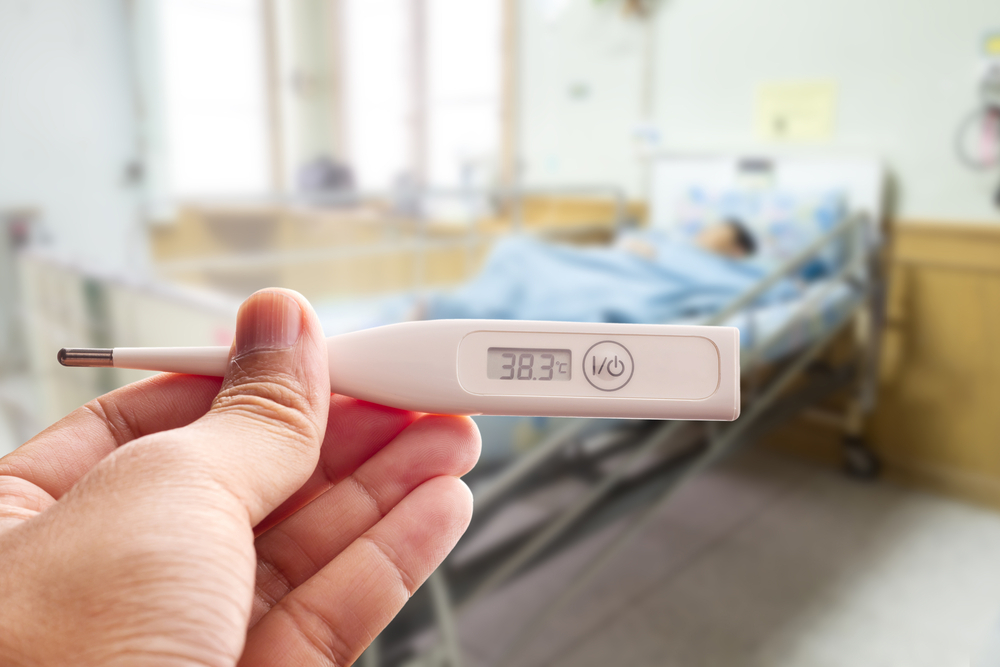Is fever suppression beneficial or not?

ARTICLE REVIEW
Acute illnesses affecting the central nervous system (CNS), such as stroke [including ischaemic stroke, intracerebral haemorrhage and subarachnoid haemorrhage (SAH)], traumatic brain injury (TBI) and CNS infection (meningitis and encephalitis), are globally major causes of disability and death [1]. Fever, in this context, is common in the early phase of these acute illnesses, as is the use of pharmacological and physical interventions for the purpose of fever suppression. However there remains clinical uncertainty about the biological purpose of fever and the therapeutic efficacy of the interventions [2-4] used for fever suppression in these patient populations. It is biologically plausible that the observational relationship between fever and morbidity and mortality may differ for patients with CNS infection, compared to those with TBI/stroke [5].
For this retrospective cohort design study the investigators hypothesised that elevated peak temperature during the first 24 hrs after intensive care unit (ICU) admission would be associated with increased mortality in patients admitted with an admission diagnosis of TBI or stroke, but not in patients with a diagnosis of CNS infection, and aimed to evaluate the association between peak temperature recorded in the first 24 hrs of ICU admission and all-cause inhospital mortality among critically ill patients with TBI, stroke and CNS infections.
Using two large, independent, multi-centric, geographically distinct and representative databases, investigators employed different risk prediction models to adjust for illness severity and different methods to classify patients into TBI/stroke and CNS infection. In the resulting article published in Intensive Care Medicine (May 2015) [6], the authors reported three key findings:
- The relationship between peak temperature in the first 24 hrs after ICU admission and inhospital mortality differs for patients with TBI/stroke compared to those with a CNS infection.
- In comparison to patients with CNS infection that are normothermic, the presence of an elevated temperature is not associated with an increased risk of death.
- In comparison to patients with TBI/stroke that are normothermic, there was no change in the risk of death for patients with an early peak temperature of between 37 and 39 °C, but there was an increase in the risk of death above 39 °C and below 37 °C.
Study Strengths & Limitations
The study has several strengths; namely the use of two large, independent, multinational databases, the use of an objective and easily verifiable outcome (hospital mortality), and the differential association of fever with outcome in the two groups being statistically strong. The limitations of this study mainly relate to the specific information available in the two databases; namely control for antipyretic use or physical cooling, the potential confounding role of shivering and the management of shivering between the two groups, and the use of a single peak temperature not allowing understanding of the relationship between other temperature parameters. Furthermore, the accepted endpoint for stroke and TBI clinical trials is a composite measure of death and disability measured at 6 months and not hospital outcome.
Take Home Messages
- This paper suggests that early fever in the context of meningitis and encephalitis is not associated with increased hospital mortality; it is possible that early fever may in fact be beneficial for this patient population.
- For traumatic brain injury and stroke, early temperature between 37 and 39 °C is not associated with increased hospital mortality; however, for these patient populations early temperature below 37 °C and above 39 °C is associated with increased hospital mortality.
- The relationship between peak temperature in the first 24 hrs after ICU admission and in-hospital mortality differs for TBI/stroke compared to CNS infection. For CNS infection, increased temperature is not associated with increased risk of death.
- The finding that the pattern of risk is different for TBI/stroke compared to CNS infection challenges the traditional assumption that avoiding hyperthermia is desirable for all neurological diseases.
This article review was submitted by ESICM Journal Review Club member Carla Teixeira on behalf of the Ethics section.
References
1. WHO (2006) Neurological disorders: public health challenges (World Health Organisation).http://www.who.int/mental_health/neurology/chapter_2_neuro_disorders_public_h_challenges.pdf. Accessed 30 Jan 2015
2. Saxena M, Andrews PJ, Cheng A, Deol K, Hammond N (2014) Modest cooling therapies (35°C to 37.5°C) for traumatic brain injury. Cochrane Database Syst Rev CD006811
3. Den Hertog HM, van der Worp HB, Tseng M-C, Dippel D (2009) Cooling therapy for acute stroke. Cochrane Database Syst Rev CD001247
4. Tunkel AR, Hartman BJ, Kaplan SL et al (2004) Practice guidelines for the management of bacterial meningitis. Clin Infect Dis 39:1267–1284
5. Greer DM, Funk SE, Reaven NL, Ouzounelli M, Uman GC (2008) Impact of fever on outcome in patients with stroke and neurologic injury: a comprehensive meta-analysis. Stroke 39:3029–3035
6. Saxena M, Young P, Pilcher D, Bailey M, Harrison D, Bellomo R, Finfer S, Beasley R, Hyam J, Menon D, Rowan K, Myburgh J (2015) Early temperature and mortality in critically ill patients with acute neurological diseases: trauma and stroke differ from infection. Intensive Care Med 41(5): 823-832 (OPEN ACCESS)